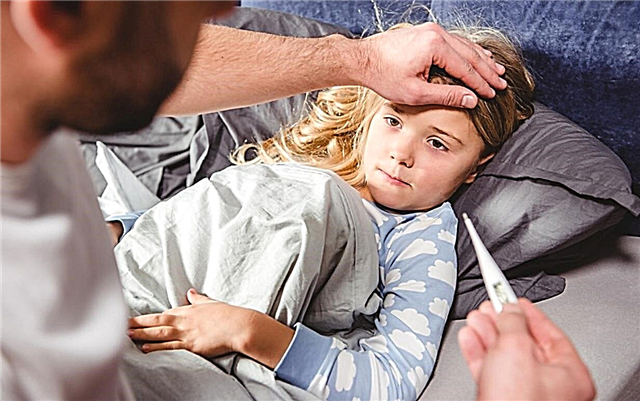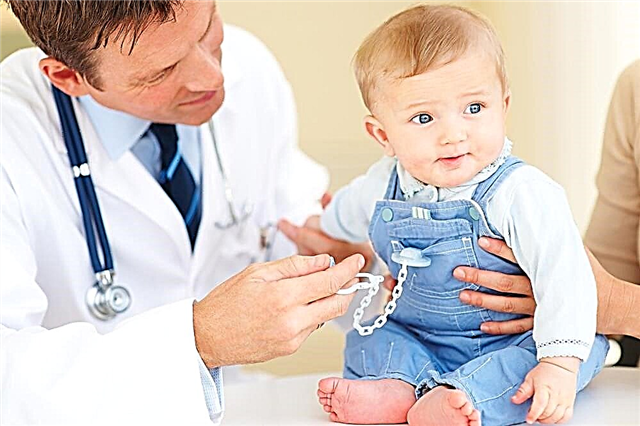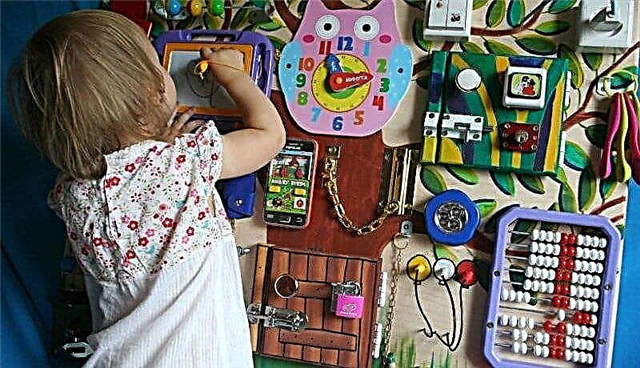
In childhood, stroke is much less common than in adults, but its consequences can be no less dangerous. If you do not provide help to the child in time, this may be the reason for his death or disability. For this reason each parent should know exactly how a stroke manifests itself in children and what needs to be done in this case.

Description
A stroke is an acute disturbance of the blood supply to the brain. When this term is mentioned, people usually imagine elderly patients. Indeed, about 10% of all elderly people have suffered a stroke by the age of 70, and another 35% are at increased risk.
As for children, then the prevalence of pathology does not exceed 0.5%. Basically, intrauterine strokes are recorded in children, when a violation of the blood circulation of the brain and hemorrhage occurs even in the period of life when the child exists in the mother's womb. Strokes resulting from birth trauma and premature birth are also common.
Among all children's strokes, children are more susceptible to pathology under the age of 3 years - they account for up to 40% of all cases. At an early age, boys are more at risk, but in adolescence, their risks decrease, but increase in girls. In general, in adolescents, strokes are more rare than in babies. They are registered in quantity no more than 2 cases per 100 thousand of the adolescent population.
Stroke is an acute vascular malfunction, in which the blood circulation in the brain is impaired, and the functionality of the area or department that was affected is lost. Without oxygen, brain cells can survive for about 6 minutes, after which the process of degradation and death invariably begins in them. The consequences can be very diverse, from persistent neurology and loss of self-care skills to disability. About 25% of all deaths in Russia are due to strokes. And here the statistics are the same for both children and adults, since strokes are taken into account all together.

Kinds
There are two main types of stroke: ischemic and hemorrhagic.
The first is associated with damage to brain cells due to the lack of normal blood flow to them, for example, due to a blood clot that clogs the lumen of cerebral vessels.
The hemorrhagic form is associated, as the name suggests, with a ruptured blood vessel. As a result, blood does not flow to a specific area of the brain, and at the site of the rupture, the resulting hematoma begins to press on other areas, causing structural and functional changes in them.
Depending on the age when this phenomenon occurs, the following types of stroke are distinguished:
- fetal stroke - what happened during the period of intrauterine existence, before birth;
- perinatal - what happened at birth or within a month from the moment of birth;
- juvenile - that has occurred in both young children and adolescents up to the age of 18.
Quite often, children experience ischemic stroke (in the elderly, on the contrary) in a ratio of about 80% to 20%. The share of hemorrhages accounts for a large proportion. The ischemic form of the disease is sometimes also called cerebral infarction. And a very rare form of stroke is considered spinal stroke, when not the brain is affected, but the spinal cord. In adults, its frequency among the total share of the disease is no more than one and a half percent, in children the spinal form is isolated cases.

Causes
Different types of pathology can be due to various reasons. If we talk about why intrauterine cerebrovascular accident occurs, then experts put the lifestyle, the state of health of the mother and the features of the current pregnancy in the first place. Your baby's risk of fetal stroke is increased if:
- the expectant mother continues to smoke, takes alcohol, drugs;
- a woman has high blood pressure, hypertensive crises are often observed;
- there was a placental abruption, and due to this, the child did not have enough oxygen, he experienced acute hypoxia;
- a woman's pregnancy proceeds against the background of diabetes mellitus;
- premature birth;
- a long anhydrous period due to the early opening of the fetal bladder.


In infants, the reasons may lie in the presence of birth trauma, prematurity, in which the brain structures did not have time to mature. Also, the reasons can be hidden in congenital heart defects, blood vessels, brain structures, in diseases acquired in the first hours (days), in which hypoxia, ischemia or circulatory disorders occur.
In adolescents, craniocerebral trauma, possible drug and alcohol intoxication, and severe stress are added to the list of possible causes.
To better understand what factors can lead to stroke, you should consider the underlying risk factors for different age groups.
- In newborns. The main risk factors are trauma to the skull, neck, and spine during childbirth. You should also observe more closely during the neonatal period of children who, during pregnancy, suffered from hypoxia or experienced it during childbirth or after them. The cause of a stroke in the crumbs of the first month of life can be tumors, as well as hematopoiesis ailments congenital or acquired in the first days of life, which lead to thrombosis. During the neonatal period, the risk of stroke, neuroinfection, and chickenpox increases.
- At a preschooler. In a one-year-old and a slightly older child, the baseline risk of stroke is reduced compared to babies in the first months of life. Children with blood diseases are at risk for the likelihood of illness. It is also worth paying attention to the mobile and restless guys - those who constantly spin, run, fall, risk damaging the cervical vertebrae, which ultimately can cause a subsequent ailment. Sometimes the cause of cerebrovascular accident is acute severe poisoning, attacks of increased intracranial pressure, high blood pressure, as well as some autoimmune diseases. Ischemic disorder can develop with severe dehydration, as it thickens the blood, and also increases the risk of blood clots.
The likelihood of a stroke increases in any disease when the membranes or substance of the brain are affected (meningitis, tick-borne encephalitis, meningoencephalitis, and others). Sometimes a stroke develops against the background of cancer.
- In adolescents. Teenagers are more fortunate than others, since they are less likely to have a stroke. And even with oncology, diabetes mellitus, blood diseases, the risk of stroke is assessed as low. But adolescents themselves successfully raise it, getting into fights, getting carried away by dangerous sports, as well as using illegal substances, alcohol.


Symptoms and signs
A childhood stroke can be more difficult to suspect than an adult, because babies cannot talk about their condition and well-being. However, the symptoms are almost the same in both adults and children. The following facts may indicate a child's stroke:
- a sharp headache, dizziness appeared, vision was impaired, hearing was lost or weakened, the child lost consciousness;
- indomitable vomiting opened for no apparent reason and reason;
- the child tries to smile, but the smile is one-sided: only one corner of the lips rises;
- coordination of movements was disturbed;
- speech has become illegible, and the child's reaction is severely inhibited;
- one eye can suddenly "squint".

Among all the possible signs, doctors consider four to be the main:
- signs of paralysis - the child cannot move an arm or leg on demand, coordination is impaired;
- confused consciousness;
- speech is impaired;
- muscles in the neck and back of the head are tense.
Other signs include the following:
- nystagmus appears, the pupil on one side expands and almost does not respond to light by narrowing;
- with ischemic lesions, neurological manifestations predominate, with hemorrhagic form - meningeal.
If we talk about children in the first days and months of life, it should be noted that a stroke can be indicated by breathing disorders, stiff neck muscles, convulsions, profuse regurgitation, and a violation of the sucking reflex. When undressing, the baby will throw up only one arm or leg. Sleep is also disturbed.

Parents of toddlers should know that absolutely any stroke has certain periods.
- Hyperacute. Lasts for the first 3 hours. The first signs may not show up. It usually lasts up to three days, and this time is important to use for diagnosis and treatment.
- Acute. It starts on the 4th day and lasts for two weeks. At this time, the main therapeutic measures are taken to reduce complications, restore blood circulation.
- Early recovery. Lasts the first six months.
- Late recovery. Lasts up to a year.
The period of preservation of residual phenomena can last up to two years, and it will require considerable effort to recover.

Treatment
There is no universal treatment - in each case, the decision is made taking into account the age and degree of the lesion. The prognosis will be most favorable only if the diagnosis is made at an early stage, and therapy begins in the first three hours after the vascular disorder. Clinical guidelines assume the child's stay in the intensive care unit. Sometimes you cannot do without the help of neurosurgeons.
Rehabilitation takes place in a neurological hospital... It includes Exercise therapy, massage, physiotherapy, as well as medicines.
Unfortunately, a recurrent stroke in children is 30% more common than in adults. As for the consequences, the children's orgasm compensates for the changes better, so the consequences will be more benign than with an adult stroke.

For strokes in children, see the following video.



